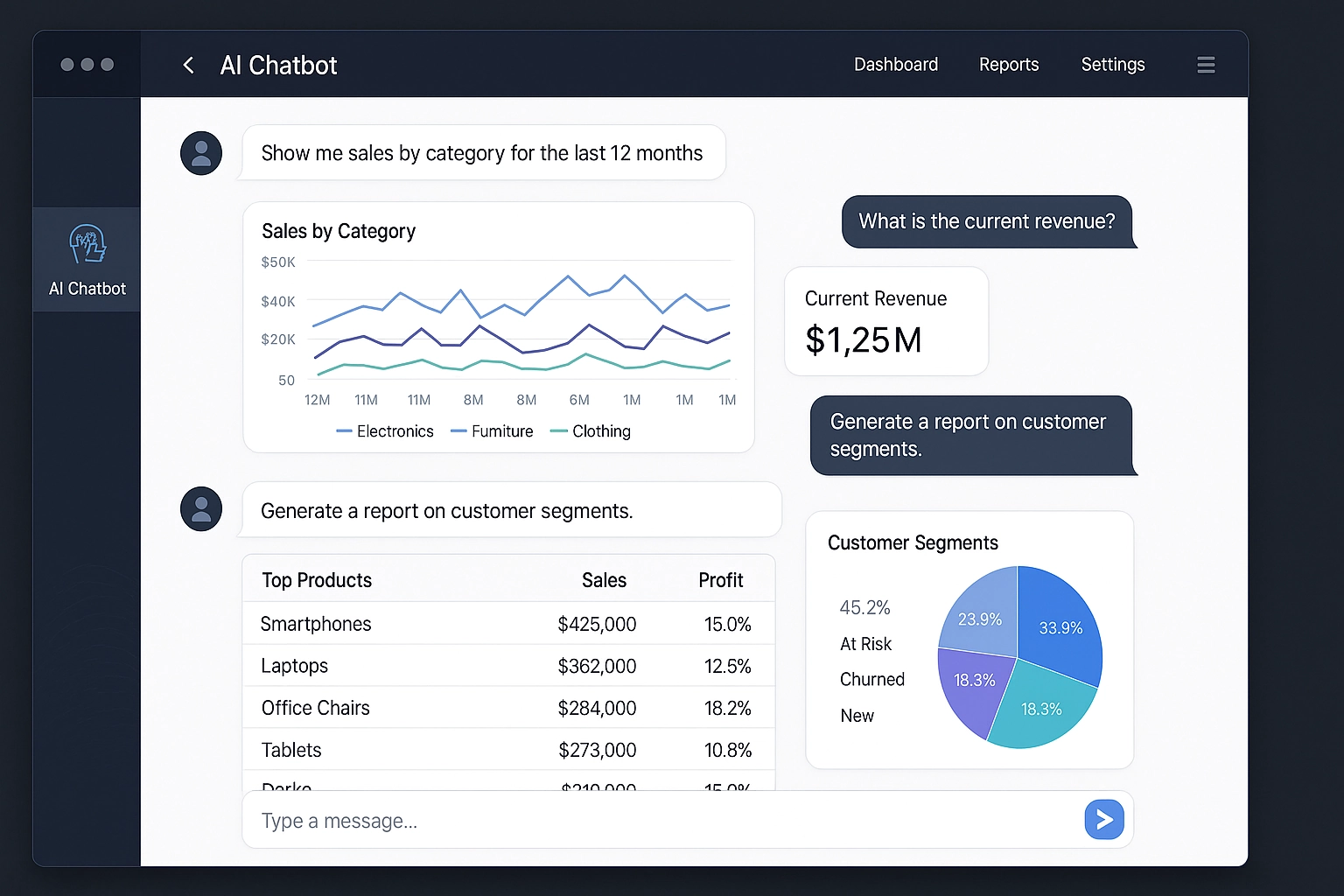
Generative AI Enterprise Applications Beyond Chatbots
While conversational AI applications have dominated headlines, the true enterprise potential of generative AI extends far beyond chatbots and virtual assistants. Organizations across industries are discovering innovative applications that transform core business functions, create new capabilities, and drive significant competitive advantage through the strategic deployment of these powerful technologies.
In product development, generative AI is revolutionizing the ideation and design process. Engineering teams are using these tools to explore vast design spaces, generate novel solutions to complex problems, and rapidly prototype alternatives. By suggesting designs that human engineers might not have considered, these systems are accelerating innovation cycles and enabling more creative approaches to product challenges.
Marketing departments are leveraging generative AI for content creation at scale. Beyond basic copy generation, sophisticated systems can now produce targeted campaign concepts, personalized messaging variants, and multimedia content tailored to specific audience segments. This capability enables more agile, data-driven marketing strategies while reducing production costs and compressing campaign timelines.
Legal teams are implementing generative AI to streamline contract analysis and drafting. These tools can rapidly review existing agreements to identify key provisions, suggest standardized language for common clauses, and generate initial drafts based on specified parameters. By automating routine aspects of legal documentation, organizations can reduce costs while enabling legal professionals to focus on higher-value strategic work.
In financial services, generative AI is enhancing risk modeling and scenario analysis. These systems can generate thousands of plausible future scenarios based on historical data and current market conditions, enabling more comprehensive stress testing and risk assessment. This capability is particularly valuable for identifying potential vulnerabilities that might be overlooked in traditional modeling approaches.
Healthcare organizations are applying generative AI to accelerate drug discovery and development. By generating and evaluating novel molecular structures, these systems can identify promising candidates for further investigation, potentially reducing the time and cost of bringing new treatments to market. Similar approaches are being applied to materials science, catalyzing innovation across multiple industries.
Supply chain optimization represents another high-value application area. Generative AI systems can create and evaluate countless potential network configurations, inventory strategies, and logistics plans to identify optimal approaches under various constraints and objectives. This capability is proving especially valuable in volatile market conditions that require frequent recalibration of supply chain strategies.
Human resources functions are implementing generative AI to enhance talent development and workforce planning. These tools can generate personalized learning pathways, suggest optimal team compositions for specific projects, and model various organizational structures to support strategic objectives. By taking a more data-driven approach to talent management, organizations can better align human capital with business needs.
Successful implementation of these advanced applications requires thoughtful integration with existing systems and processes. Organizations must establish appropriate governance frameworks, ensure data quality and accessibility, and develop the technical infrastructure to support these computationally intensive applications. Additionally, clear metrics for measuring business impact are essential for prioritizing investments and demonstrating value.
As generative AI technologies continue to mature, we can expect even more transformative applications to emerge. Organizations that take a strategic, business-focused approach to implementing these capabilities—rather than viewing them merely as technological novelties—will be well-positioned to realize substantial competitive advantages in an increasingly AI-driven business landscape.